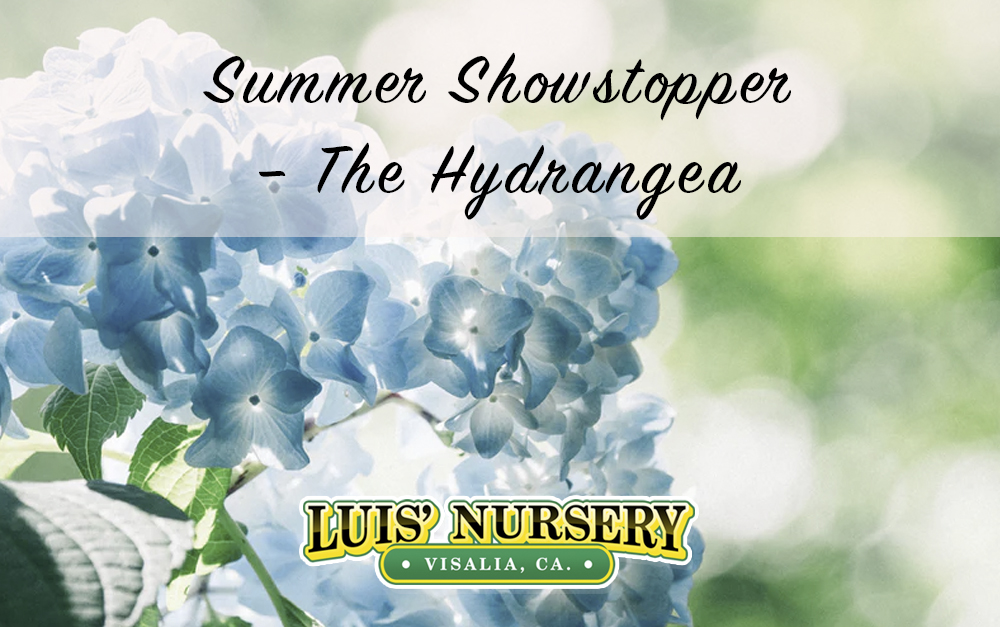During the summer months there are a multitude of flowers that make their summer stage debut, but there is one particular shrub that always wows us with its beautiful, show-stopping flowers: the hydrangea. There are many species of hydrangeas seen growing during the summer months and they showcase a variety of colors. Chartreuse, blue, violet, long-lasting pink, and white are just a few of the floral colors of hydrangea that can brighten up your summer garden.
Hydrangeas are an inexpensive addition to your garden. They are easily grown in pots, indoors or the yard. Even when they are not blooming, the lush green foliage can be pretty spectacular, but we are lucky that this near-perfect plant blooms six months out of the year.
Hydrangeas prefer the shade in the San Joaquin Valley and Central Valley area. It’s important that you place them in a spot that doesn’t get too much sun, or the plant will struggle and could have wimpy blooms. You also don’t want it to have too much shade for the same reason! The perfect spot would allow your hydrangea to have the kiss of the morning sun. They are well suited for our hardiness zone as they love the acidic soil.
Hydrangeas are generally thirsty plants. This is no surprise when you consider that the name hydrangea stems from the Greek word, “hydro,” for water! If you grow them in a container you will want to be sure to take extra care to not let the water evaporate out. You can test it by sticking your finger about two inches down into the soil. If the soil is moist and not sludgy then it’s happy and well taken care of. If you find that it’s too dry you can add more water. Outside of a container the key is to keep the ground cool, and make sure you’re providing suitable irrigation, without overwatering. A good tip would be to use mulch to help cool the ground.
You should also be sure to fertilize them at least twice during the growing season. Take care to be diligent with your deadheading and pruning to promote bloom growth.
Hydrangeas are usually either mopheads or lacecaps. Mopheads are typically rounded clusters of large showy blooms up to 14 inches in diameter, and bloom in late spring and summer. Lacecaps have smaller flowers and look flat and empty in the center. The leaves and colors of both species vary as well. Fun fact, you can even change the color of your hydrangeas by adjusting the soil pH! Science experiment anyone? Just be mindful of any plants nearby, you don’t want to mess with their soil!
There is a hydrangea for every garden. Your beautiful blooms can be cut and brought into the house to add a pop of color to the dinner table. Whether you add them to your yard in gardening beds, containers, or center stage in your backyard, they will always steal the show. Come by and check out our lovely selection of hydrangeas! What is your favorite type of hydrangea? We would love to hear!



